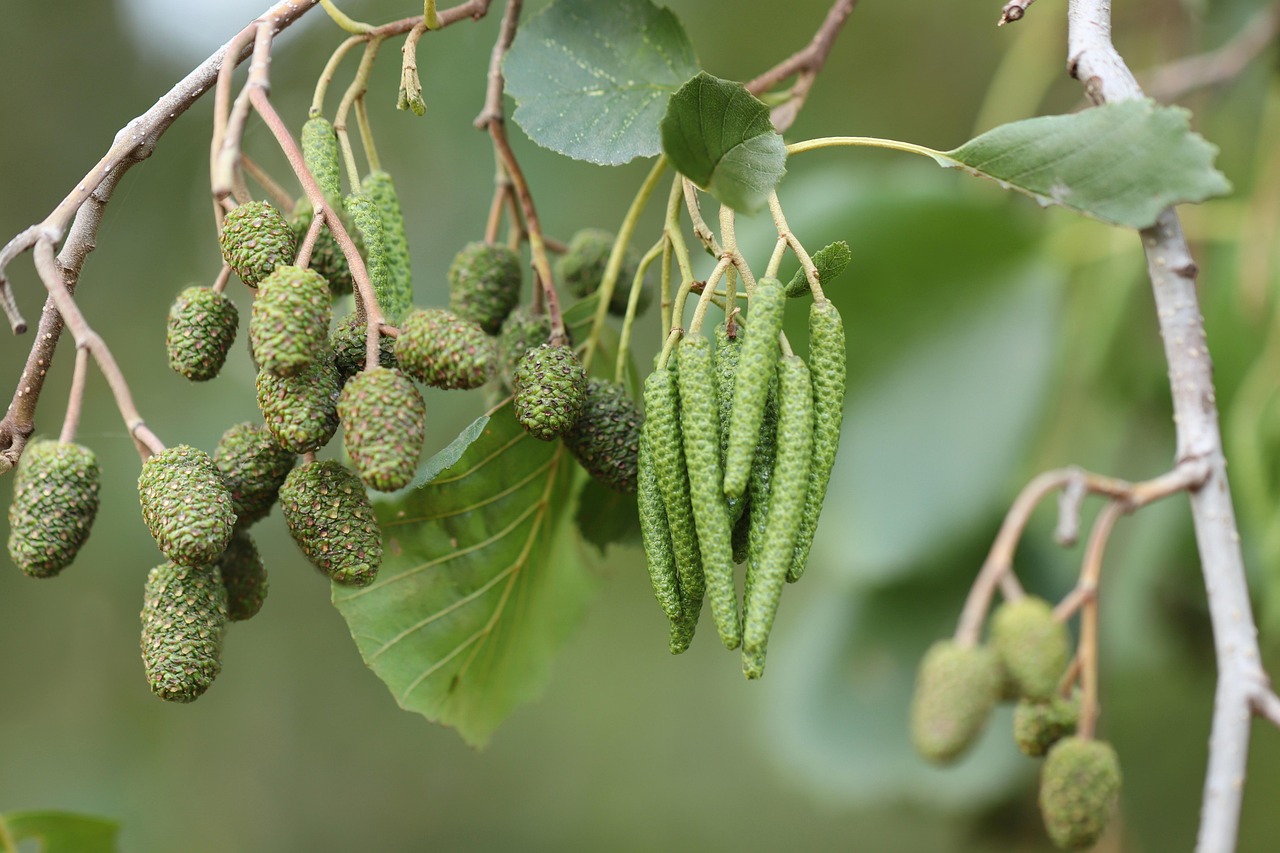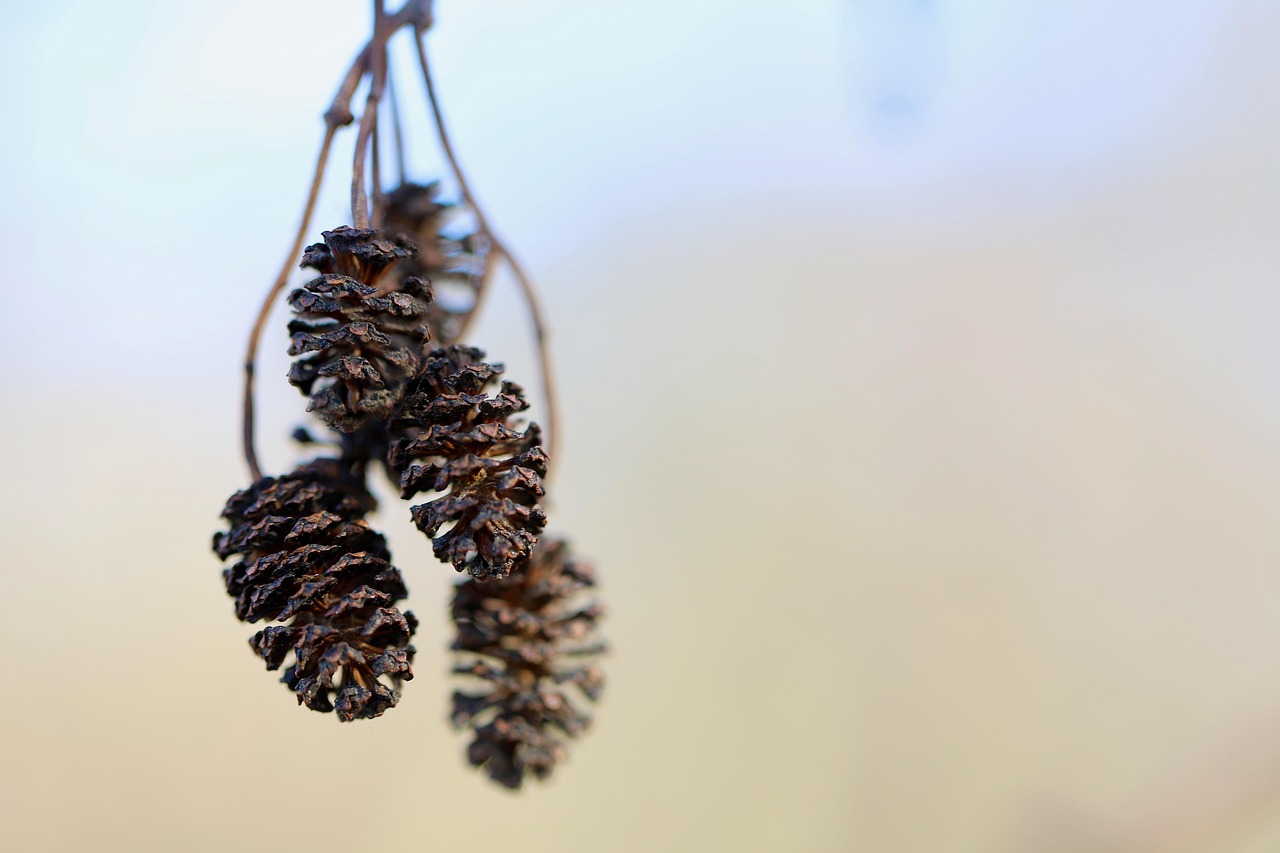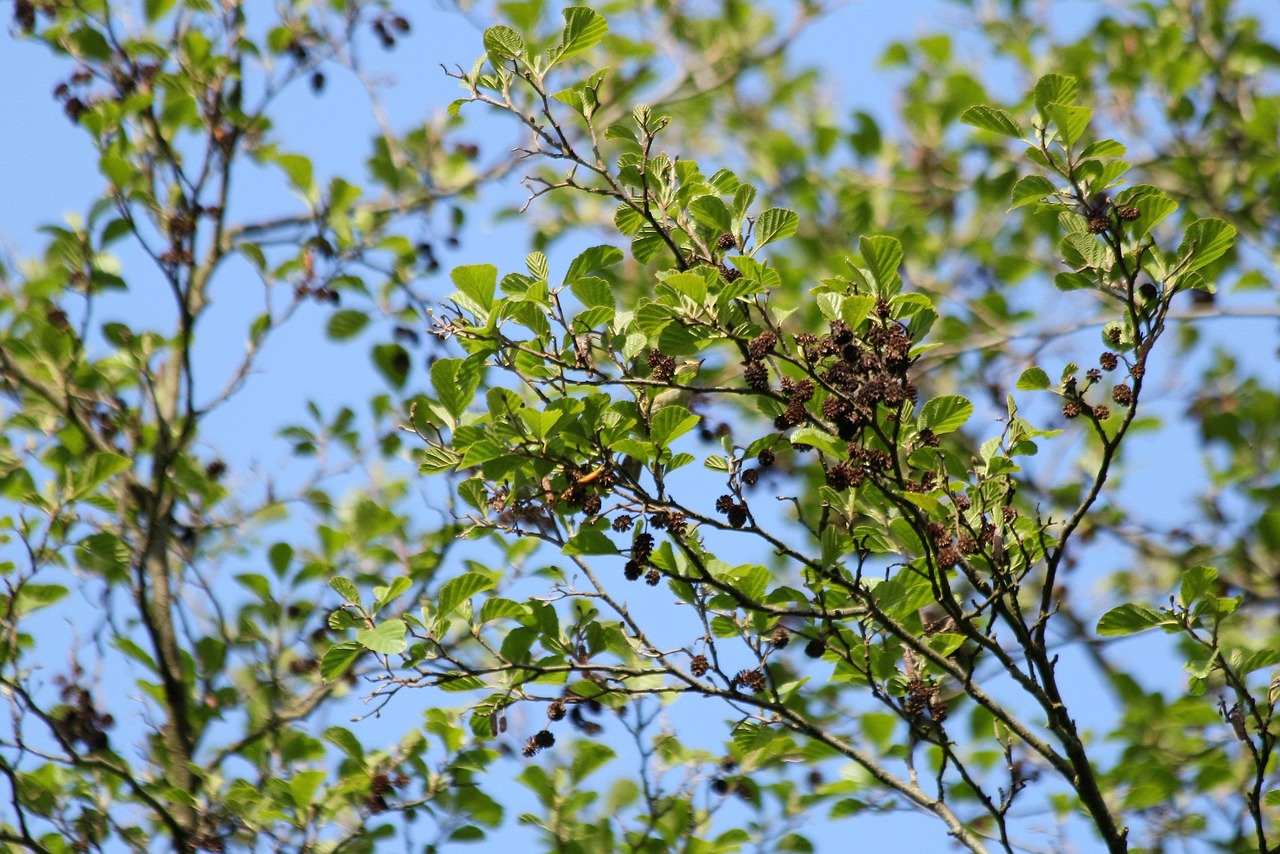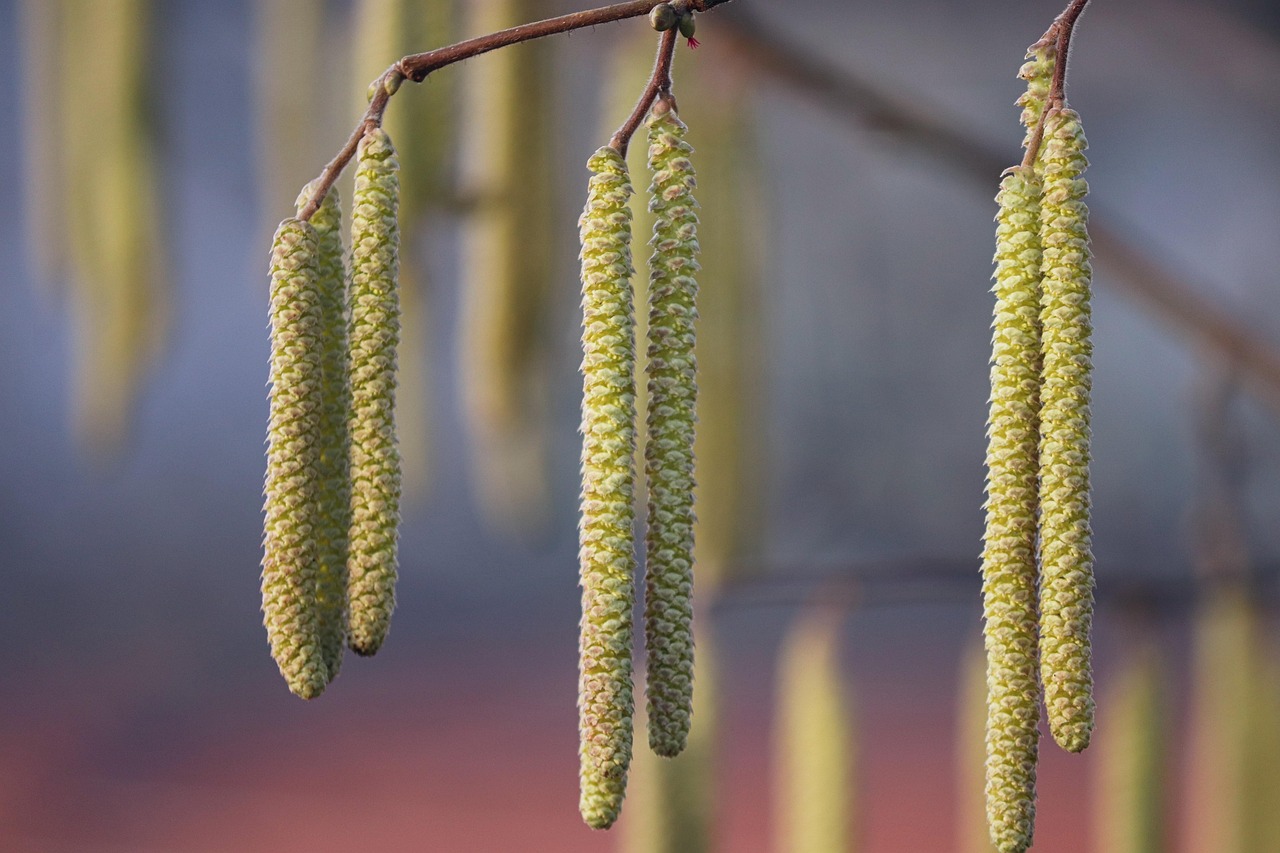Alder trees typically grow at a rate of 3 to 10 feet per year, making them one of the fastest-growing trees suitable for wetland landscapes. Their growth can vary based on environmental factors such as soil moisture, nutrients, and sunlight.
Alder trees, particularly red alder (Alnus rubra) and black alder (Alnus glutinosa), are commonly found in wetland areas. They thrive in moist conditions and are often used for restoration projects where soil stabilization is essential. Their rapid growth makes them ideal for quickly establishing a canopy in disturbed or degraded environments.

These trees play a crucial role in the ecosystem. They improve soil fertility through nitrogen fixation, provide habitat for wildlife, and help control erosion along waterways. Understanding their growth rate is vital for landowners and landscape architects who aim to incorporate alder trees into their wetland designs.
Growth Rate Factors
The growth rate of alder trees is influenced by several factors, including:
- Soil Quality: Rich, loamy soils that retain moisture promote faster growth.
- Water Availability: Consistent moisture is essential, as alder trees prefer wet conditions.
- Sunlight: Full sun to partial shade conditions enhance growth rates significantly.
- Climate: Alder trees grow best in temperate climates with adequate rainfall.
Alder trees are also relatively resilient. They can tolerate a range of soil types but perform best in acidic to neutral pH levels. Here is a summary of key growth rate factors:

| Factor | Optimal Condition | Impact on Growth Rate |
|---|---|---|
| Soil Quality | Rich, loamy soil | Increases growth speed and height |
| Water Availability | Consistently moist | Promotes healthy root development |
| Sunlight | Full sun to partial shade | Enhances photosynthesis and growth |
| Climate | Temperate with adequate rainfall | Supports overall vitality and growth rate |
The establishment phase of alder trees is critical. During this time, they require proper care to ensure optimal growth. For new plantings, providing sufficient space between trees allows for their expansive root systems to develop without competition. It’s also beneficial to mulch around the base to retain soil moisture and suppress weeds.
Alder trees can reach heights of 40 to 100 feet at maturity, depending on the species and growing conditions. They typically begin producing seeds within 3 to 5 years after planting, which can further enhance their spread in suitable habitats. This rapid reproduction, combined with their growth rate, makes them a significant species in wetland ecosystems.
When planning for alder tree planting in wetland landscapes, it is essential to consider their interactions with other species. Alder trees often form symbiotic relationships with various fungi, which helps them absorb nutrients more effectively. This relationship can enhance the growth rates not only of the alders themselves but also of surrounding plants.

In summary, understanding the growth rates and requirements of alder trees is essential for anyone looking to enhance wetland landscapes. Their rapid growth, ease of establishment, and ecological benefits make them a valuable addition to these environments.
Pro-Tips and Common Mistakes to Avoid
- When I first started planting alders, I underestimated how much space their root systems need. Always give enough room between trees—at least 6-10 feet—to prevent competition and ensure healthy growth.
- Initially, I neglected to check soil pH, assuming alders would adapt easily. A simple soil test can save you time; aim for slightly acidic to neutral pH levels for the best results.
- In my early projects, I didn’t mulch properly, which led to moisture loss and weed invasion. Mulching around the base of the trees significantly helps retain soil moisture and suppress weeds—don’t skip this step.
- When I first planted seedlings, I didn’t water them consistently during dry periods. Regular watering during the first growing season is crucial for establishing a strong root system—stay vigilant especially in drought conditions.
- I overlooked the importance of monitoring for pests and diseases at first. Regular inspections and early interventions can prevent minor issues from becoming serious problems, keeping your alders healthy.
- In my experience, rushing the planting process without proper site assessment can lead to poor growth. Always evaluate soil moisture, sunlight, and site drainage beforehand to match the right species and planting technique.
- When planting in challenging soils, I found integrating organic matter or compost during planting improves nutrient availability. Don’t forget to amend poor soils for better establishment.
Planting Alder Trees in Wetland Areas
When considering the planting of alder trees in wetland landscapes, it is crucial to choose the right location and conditions. Proper site selection ensures that these trees thrive and contribute effectively to the ecosystem. Here are some key points to consider when planning a planting project:
- Site Assessment: Evaluate the site’s soil type, moisture levels, and sunlight exposure.
- Spacing: Allow for adequate spacing between trees to promote healthy growth and airflow.
- Companion Planting: Consider planting with other species that benefit from the nitrogen-fixing abilities of alders.
Before planting, it is advisable to conduct a soil test. This test identifies nutrient levels and pH, allowing for appropriate amendments to ensure optimal conditions for growth. Alder trees prefer slightly acidic to neutral soils but can tolerate a range of pH levels.

Planting Techniques
Successful establishment of alder trees involves careful planting techniques. Here are steps to follow for effective planting:
- Preparation: Clear the planting area of weeds and debris. Dig holes that are twice the width of the root ball and deep enough to accommodate the entire root system.
- Soil Amendments: If necessary, mix organic matter or compost into the excavated soil to enhance fertility.
- Planting: Place the tree in the hole, ensuring that the root collar is level with the soil surface. Backfill with soil, gently tamping down to eliminate air pockets.
- Watering: Water thoroughly after planting to settle the soil around the roots. Continue to water regularly during the first growing season.
After planting, monitor the young alders for signs of stress or disease. Early intervention can help ensure their survival and promote rapid growth.
Maintenance Requirements
Alder trees require some maintenance to thrive in wetland landscapes. Understanding their needs can make a significant difference in their growth rate and overall health. Here are essential maintenance practices:
- Watering: Although alders thrive in moist conditions, they may need supplemental watering during prolonged dry spells, especially when young.
- Mulching: Apply a layer of mulch around the base of the tree to retain moisture, suppress weeds, and regulate soil temperature.
- Pruning: Regular pruning helps maintain shape and remove dead or diseased branches. This encourages healthy growth and prevents overcrowding.
Alder trees are relatively pest-resistant, but they can be affected by certain insects and diseases. Regularly inspect trees for signs of infestations or fungal infections. If detected, consult with a local agricultural extension office for appropriate treatments.
Benefits of Alder Trees
The benefits of incorporating alder trees into wetland landscapes extend beyond their rapid growth. These trees provide numerous ecological advantages:
- Nitrogen Fixation: Alder trees improve soil fertility by converting atmospheric nitrogen into a form usable by plants.
- Erosion Control: Their extensive root systems help stabilize soil along riverbanks and shorelines, reducing erosion.
- Wildlife Habitat: Alders provide habitat and food for various wildlife species, including birds, insects, and mammals.
Additionally, alders can improve water quality by filtering pollutants and sediments from runoff before they enter waterways. This makes them an invaluable component of wetland restoration projects.
Alder Tree Varieties for Wetlands
Different species of alder trees offer unique characteristics suitable for various wetland conditions. Here are some popular varieties:
| Species | Height at Maturity | Growth Rate | Habitat Preference |
|---|---|---|---|
| Red Alder (Alnus rubra) | 40-100 feet | Fast (3-10 feet/year) | Moisest areas, riverbanks |
| Black Alder (Alnus glutinosa) | 50-80 feet | Moderate (2-6 feet/year) | Pond edges, floodplains |
| Sitka Alder (Alnus viridis ssp. sinuata) | 15-30 feet | Fast (3-10 feet/year) | Coastal wetlands, streambanks |
Selecting the right variety based on local climate and soil conditions will enhance the success of your wetland project. Each species offers unique benefits, making them adaptable for various restoration efforts.
Ecological Importance of Alder Trees
Alder trees are not only valued for their rapid growth but also for their significant ecological contributions. They play a vital role in maintaining the health and stability of wetland ecosystems. Understanding these contributions can help landowners and conservationists appreciate the importance of incorporating alders into their landscapes.
Nitrogen Fixation
One of the most notable benefits of alder trees is their ability to fix nitrogen in the soil. This process enriches the surrounding soil, allowing other plants to thrive. The symbiotic relationship between alder roots and specific bacteria known as Frankia is crucial for this function. Here is how nitrogen fixation works:
- Alder tree roots host Frankia bacteria.
- These bacteria convert atmospheric nitrogen into ammonia, a form that plants can utilize.
- This process enhances soil fertility, benefiting nearby vegetation.
This natural fertilization process is particularly beneficial in disturbed or degraded areas where soil nutrients may be lacking. By planting alders, land managers can improve overall ecosystem health.
Habitat for Wildlife
Alder trees provide essential habitat for a variety of wildlife species. Their dense foliage and structural complexity offer shelter and food sources. Some key aspects include:
- Birds: Many bird species, including woodpeckers and songbirds, rely on alder trees for nesting sites and food.
- Insects: Alder trees attract a wide range of insects, which serve as food for other animals in the food chain.
- Mammals: Small mammals like squirrels and deer often feed on alder leaves and bark.
Soil Stabilization and Erosion Control
Alder trees play a crucial role in stabilizing soil along waterways and floodplains. Their extensive root systems anchor the soil, preventing erosion during heavy rains or flooding events. Here are some ways in which alders contribute to soil stability:
- Root Structure: Alder roots penetrate deep into the soil, creating a network that holds the soil in place.
- Moisture Retention: The presence of alder trees helps maintain moisture levels in the surrounding soil, reducing runoff.
- Bank Protection: By stabilizing riverbanks and shorelines, alders help protect aquatic habitats from sedimentation.
This erosion control is particularly important in areas prone to flooding or where land degradation is an issue. Establishing alder trees can significantly enhance the resilience of wetland landscapes against environmental changes.
Using Alder Trees in Restoration Projects
Alder trees are often used in ecological restoration projects due to their rapid growth and ability to improve soil quality. They are especially beneficial in areas that have experienced disturbance or degradation. Here are some considerations when using alders in restoration:
Site Preparation
Before planting alders, it is crucial to prepare the site adequately. Steps include:
- Removing Invasive Species: Clear the area of any invasive plants that may compete with alders for resources.
- Soil Testing: Conduct tests to determine nutrient levels and pH, making necessary amendments to support alder growth.
- Creating Planting Zones: Designate specific zones for planting based on moisture levels and sunlight exposure.
Monitoring Growth and Health
After planting, ongoing monitoring is essential to ensure the success of alder trees in restoring ecosystems. Key practices include:
- Regular Inspections: Check for signs of disease, pests, or environmental stress.
- Water Management: Ensure that alders receive adequate moisture, especially during dry periods.
- Weed Control: Manage competing vegetation that could hinder the growth of young alders.
By carefully managing these factors, restoration practitioners can maximize the benefits of alder trees in their projects.
Alder Trees and Climate Resilience
The ability of alder trees to adapt to changing environmental conditions makes them valuable in the context of climate resilience. Their role in carbon sequestration contributes positively to mitigating climate change impacts. Some benefits include:
- Carbon Storage: As fast-growing trees, alders sequester carbon dioxide from the atmosphere, helping to reduce greenhouse gas levels.
- Diverse Ecosystems: By providing habitat and improving soil quality, alders support biodiversity, which is crucial for resilient ecosystems.
- Flood Mitigation: Their capacity for moisture retention aids in flood prevention and management.
The integration of alder trees into wetland landscapes not only supports biodiversity but also enhances climate resilience through various ecological functions. This makes them an indispensable asset for sustainable land management practices.
Challenges in Alder Tree Management
While alder trees offer numerous benefits to wetland landscapes, managing them effectively can present challenges. Understanding these challenges is essential for successful growth and ecological contributions. Here are some common issues that may arise:
- Pests and Diseases: Alder trees can be susceptible to pests such as aphids and beetles, as well as diseases like alder canker. Regular monitoring and treatment may be necessary to maintain tree health.
- Invasive Species Competition: Invasive plant species can outcompete alders for resources, particularly in disturbed areas. Effective management strategies should include removal of invasive plants.
- Soil Quality Variations: Changes in soil moisture levels or nutrient content can affect growth rates. Conducting regular soil tests helps in making necessary adjustments.
Addressing these challenges through proactive management can help ensure that alder trees thrive in their wetland habitats, thereby maximizing their ecological benefits.
Complementary Plant Species
Integrating alder trees with other complementary species can further enhance the ecological health of wetland landscapes. Some plants that pair well with alders include:
- Willows (Salix spp.): These fast-growing shrubs provide additional cover for wildlife and stabilize soils alongside alders.
- Red-osier Dogwood (Cornus sericea): This shrub thrives in wet conditions and offers habitat for birds while improving soil quality.
- Native Grasses: Grasses can help control erosion and provide forage for various wildlife species, enhancing the overall biodiversity of the area.
Choosing the right companion plants can create a more diverse ecosystem, improve soil health, and provide additional benefits to wildlife.
Community Involvement and Education
Engaging the community in alder tree planting and management initiatives can foster a sense of stewardship for local wetland areas. Educational programs can raise awareness about the benefits of alders and involve local residents in restoration efforts. Effective strategies include:
- Workshops: Organize workshops on planting techniques, tree care, and the ecological importance of alders.
- Volunteer Days: Host community volunteer days for tree planting and maintenance activities, promoting hands-on learning experiences.
- Collaboration with Schools: Partner with local schools to create educational programs that incorporate field trips to wetland sites.
Encouraging community participation not only aids in the successful establishment of alder trees but also cultivates a deeper appreciation for local ecosystems.
Final Thoughts
Alder trees are a remarkable asset to wetland landscapes, offering rapid growth, ecological benefits, and resilience against environmental challenges. Their ability to fix nitrogen enhances soil quality while providing critical habitat for various wildlife species. By understanding their growth requirements and management challenges, landowners and conservationists can effectively incorporate alders into their restoration projects.
The integration of alder trees into wetland ecosystems serves as a powerful tool for improving biodiversity, enhancing soil stability, and contributing to climate resilience. Through careful planning, community involvement, and ongoing management, we can maximize the benefits that alder trees provide to our natural landscapes. Ultimately, fostering healthy wetland ecosystems supports not only local wildlife but also the well-being of our communities.
As we look to the future of land management and environmental stewardship, embracing the value of alder trees will be essential in creating sustainable, vibrant ecosystems for generations to come.
